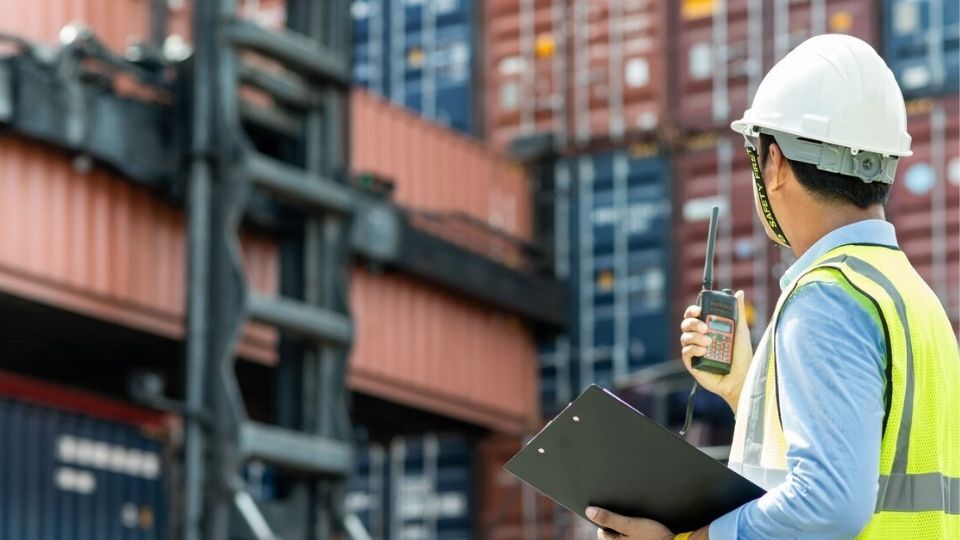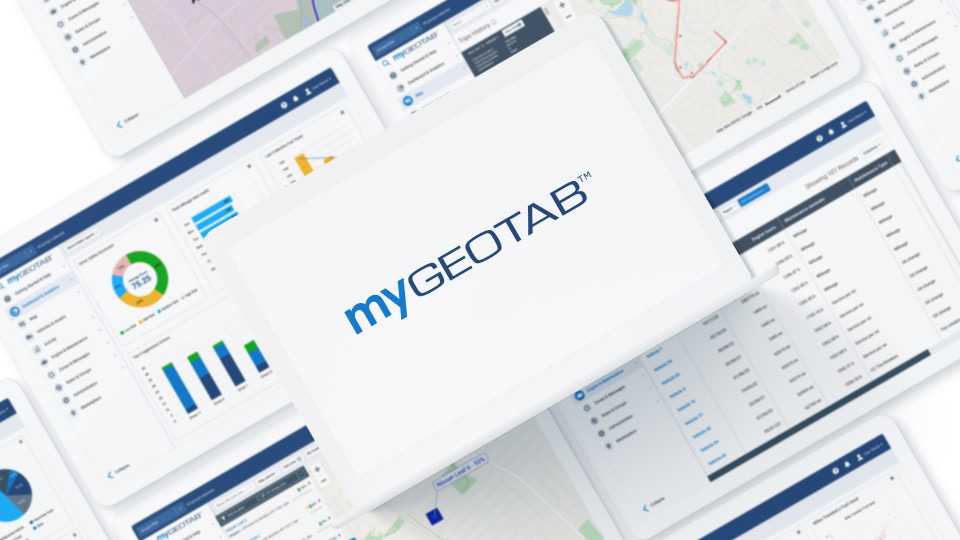How alternative fuels are helping government and commercial fleets lower heavy-duty trucks emissions
Read this post to discover what alternative fuel sources exist for heavy-duty fleets, as well as their pros and cons. Plus, explore real-world examples from the City of Carmel and Miller Waste Systems on reducing costs and improving carbon footprint using alternative fuels.

Oct 14, 2025

Key Insights
- Government and commercial organizations are increasingly adopting alternative fuels for heavy-duty fleets to reduce emissions and costs, exploring options like biodiesel and compressed natural gas
- Choosing the right alternative fuel requires careful consideration of factors like infrastructure, cost, range and payload
- Real-world examples, such as Carmel Street Department and Miller Waste Systems, demonstrate the successful implementation of alternative fuel programs and the importance of data tracking with tools like Geotab
Breaking free from traditional fuel with alternative sources
Traditional fuel sources such as gasoline and diesel (and their related inputs like diesel exhaust fluid or DEF) are no longer the only option for heavy-duty government fleets. A wave of change is upon us, driven by the rise of alternative fuels. These cleaner fuel sources present a unique opportunity to abscond from rising fuel costs and contribute to a healthier environment. This post will delve into the world of alternative fuels, examining their benefits, challenges and how they connect to the future of transportation.
What are alternative fuels?
Alternative fuels are non-gasoline energy sources. Compared to gasoline, these fuels can help your agency save money by being less expensive than gasoline per gallon, potentially decreasing maintenance expenses over time and enhancing engine performance. Heavy-duty fleets have a wealth of alternative fuel types to choose from, which we’ve listed below, along with their pros and cons.
Gaseous alternative fuels
Compressed natural gas (CNG)
What is it: Predominantly composed of methane, CNG is a gaseous substance that is compressed to less than 1% of its starting volume to make transportation and storage of high-pressure cylinders more manageable.
Benefits:
- Burns cleaner than both diesel and gasoline
- Can be more cost-efficient than both diesel and gasoline
- Generally fewer maintenance requirements
Drawbacks:
- Shorter driving ranges than gasoline-based fuel sources
- There may be a scarcity of CNG fuel stations available in certain regions
- Possibility of decreased range and engine performance
Hydrogen
What is it: Hydrogen is a gas that only emits water vapor and heat when burned as a fuel source. It is stored in fuel cells by cryogenic or pressurized (liquefied) means.
Benefits:
- One of the cleanest and safest burning alternative fuels available
- Greatest energy content by weight compared to other common fuels
- Quick refueling durations make hydrogen ideal for transportation and logistics
Drawbacks:
- Production and distribution challenges have restricted widespread adoption
- Can be more expensive than gasoline
- Extremely flammable and requires extra care while transporting or producing it
Liquid alternative fuels
Liquefied natural gas (LNG)
What is it: As the name implies, liquefied natural gas is a version of natural methane that has been cooled to a liquid state, which condenses its volume by roughly 600 times. This makes it more practical to store and move.
Benefits:
- Produces fewer carbon emissions than gasoline
- Generally is considered to be higher quality than gasoline
- Greater energy density than CNG
Drawbacks:
- Must be stored at extremely low temperatures to maintain stability
- Can be subject to drastic price fluctuations
- Infrastructure limitations, such as costly cryogenic storage and few refueling stations in some areas
Propane (liquefied petroleum gas)
What is it: LPG is a blend of butane and propane liquid. It’s pressurized to promote safe and efficient transportation.
Benefits:
- Fewer greenhouse gas (GHG) emissions than gasoline
- Enhanced engine longevity
- Less costly than gasoline or diesel options
Drawbacks:
- Lower fuel economy due to its decreased energy density
- Fuel stations that offer propane are generally less available than gasoline options
- Safety concerns exist with transporting LPG
Renewable diesel
What is it: Renewable diesel is a synthetic biofuel blend that is similar in chemical composition to petroleum diesel, except it is refined via hydrotreating from cleaner sources like animal- or plant-based oils and fats.
Benefits:
- Burns cleaner than standard diesel, decreasing particulate matter by 47% and hydrocarbon emissions by up to 67%
- It is compatible with most heavy-duty diesel engines at blends up to 100%
- Has the highest energy balance of any U.S fuel, at an energy balance of 3.5-to-1
Drawbacks:
- May gel at higher temperatures than petroleum diesel fuel
- Production expenses from feedstocks and refining processes are typically higher than petroleum diesel
- Not available in all jurisdictions
Biodiesel
What is it: Biodiesel is a renewable diesel fuel that is produced via transesterification, a process that converts oils and fats into a fuel that is chemically similar to diesel fuel. It can be made from recycled grease, animal fats, or plant-based oils. Biodiesel is typically blended with petroleum diesel up to B20, a blend of 20% biodiesel and 80% diesel, but can be utilized in higher blends in some applications.
Benefits:
- Can help you work toward emissions targets in a more scaled approach
- It’s a non-toxic and biodegradable fuel source that reduces greenhouse gas emissions
- It provides superior lubrication and cetane that may boost engine performance
Drawbacks:
- Higher chances of filter clogging in cold weather
- Lower BTU compared to petroleum diesel
- More expensive to produce compared to petroleum diesel fuel
Alternative fuels: Comparative analysis
To make navigating the vast world of alternative fuels easier for your heavy-duty government or commercial fleet, we’ve pulled together key insights in this matrix below. Use this information to make the most informed decision regarding your fleet and its alternative fuels journey.
Alternative fuels compared to diesel
| Biodiesel | Renewable Diesel | CNG | LNG | Hydrogen | Propane | |
| Carbon reduction % | 75% or greater | 65% on average | Roughly 20% | About 30% | Up to 100% | Roughly 11% |
Range
| Slightly lower | Similar | Lower | Similar | Similar | Lower |
| Upfront cost | Low | Low | Moderate | Moderate | High | High |
Fuel cost
| Similar | Similar | Lower | Lower | Higher | Lower |
Payload
| Similar | Similar | Reduced | Lower | Similar | Lower |
| Energy density | Slightly lower | More energy per pound of fuel, but less per gallon | Lower | Lower | Higher | Slightly lower |
| Cold weather performance | Sometimes poorer fuel efficiency | Similar or better | Sometimes poorer fuel efficiency | Better | Poorer | Better |
Alternative fuel implementation comparison
| Biodiesel | Renewable Diesel | CNG | LNG | Hydrogen | Propane | |
| Scalability | Good | Limited by feedstock | Moderate | Moderate | Limited | Moderate |
| Infrastructure | Existing | Existing | Developing | Developing | Developing | Developing |
| Compatible with existing infrastructure | Yes* Up to a B20 blend.
Fuel infrastructure and engine upgrades allow for use up to B100. | Yes* May require additional heating equipment in cold weather climates.
Current fuel additives do not improve cold flow. | Yes* Requires dedicated fueling infrastructure. | Yes* Requires dedicated fueling infrastructure. | No* 5-20% blends may be compatible with natural gas infrastructure.
Requires dedicated fueling infrastructure. | Yes* Requires dedicated fueling infrastructure. |
| Simple reporting | Yes | Yes | No | Yes | Yes | Yes |
Real-world perspectives on adopting alternative fuels
With the emphasis on reducing costs and harmful emissions, many heavy duty truck fleets in both the public and commercial sectors are looking for alternative fuels. At this year's Geotab Connect–an event for fleet leaders and professions–we were able to bring together a few respected speakers to discuss their experiences and insights on alternative fuels. Here’s what they had to say.
Bailey Arnold, Director of Healthy Air Solutions at the American Lung Association, shared that oftentimes, biodiesel is the first alternative fuel for government fleets. Arnold began by explaining that, “When it comes to alternative fuels and fleet decarbonization, it is not a one-size-fits-all solution,” indicating that not every fuel or technology will work in every application. Arnold went on to explain that, “We usually see that biodiesel is [...] the first alternative fuel that folks [...] dip their toes in the waters of. Up to a B20 blend it’s compatible with [...] existing technology. It’s just really an easy way to take that step in.”
For the Carmel Street Department, this was especially true. They used Geotab to pilot a biodiesel program to help them achieve their operational goals.
Watch the full recording of this session by clicking here.
Carmel Street Department’s success with a biodiesel fuel program and Geotab
Carmel Street Department has been a Geotab customer since the 2021-2022 time frame, providing public works services to the City of Carmel, Indiana. Jason Armes, Fleet Supervisor of the Street Department for the City of Carmel, spoke about how the previous administration encouraged their department to try and go electric or hybrid. However, heavy-duty jobs like snow plowing are one of the primary functions of their fleet and Jason had yet to see a fully electric pickup truck model that was capable of pushing massive amounts of snow effectively. His department did not want to be put in a scenario where their electric trucks’ batteries died in the middle of a grueling snow removal shift, with roads desperately needing to be cleared. Due to these challenges with implementing a 100% electric fleet, Carmel Street Department looked at biodiesel fuel as a more realistic option. They had attended an event in 2022 where they heard Larry Campbell, Fleet Manager for the City of Fort Wayne, share insights about how his city’s biodiesel program had helped them reduce emissions by 51%. According to Jason: “It was a no-brainer for us to jump on the biodiesel bandwagon.”
After procuring several biodiesel trucks, Jason’s team worked with Geotab’s solution engineers to develop a way to track biodiesel fuel emissions (not just standard diesel emissions), which typically burn about 14% cleaner. Their goal: To eventually reach a 14-16% reduction in overall emissions.
Within six weeks, Geotab’s solution engineers had helped them devise a new calculation that enabled them to track these byproducts of biodiesel fuel. This emissions tracking is valuable in helping them reach their sustainability targets and also visualize savings. In Jason’s own words during his Connect 2025 breakout session: “I know we’re not supposed to necessarily plug Geotab [during the presentation], but here we are; I’m going to plug Geotab. They track almost anything you ask them to track for you, and if they don’t track it, they will figure out how.”
Jason mentioned that two of the key reports he looks at most are the daily report, which ranks the worst and best emitting vehicles in his city’s fleet and the overall emissions report, which shows total CO2 expenditures.
CO2 emissions ranking by vehicle

Overall emissions dashboard

As a result of Carmel’s soy-based biodiesel program, they’ve been given the Clean Air Champion award by Greater Indiana Clean Cities in December of 2023. Jason closed by encouraging other agencies to make the transition to biodiesel fuel: “It’s really easy to jump into biodiesel; you just have to get the right people on board.”
Fun fact: Carmel, Indiana is the roundabout capital of the United States, with more than 150 roundabouts! From street sweeping to snow clearing, Jason’s team handles it all to make sure these roundabouts are kept in pristine shape for every motorist to use.
Pioneering CNG in solid waste operations: Miller Waste Systems, Inc.'s story
Gus Kalnins, Corporate Operations Technology Specialist at Miller Waste Systems, Inc., spoke at Connect 2025 about how his organization used Geotab to help implement a CNG program for their trucks by measuring and predicting fuel consumption totals. Gus elaborated on how for Canada-based Miller Waste Systems, 75 to 80% of work is done for municipalities in the curbside pickup space.
They were led down the CNG route once municipalities started getting involved in environmental initiatives. In tenders or RFPs, customers were writing that their municipalities would begin using batteries, CNGs, renewable gas or anything but diesel fuel to complete solid waste pickups. In order to bid on the work opportunities, Miller Waste Systems would have to implement a more sustainable fuel option. They engaged a consultant in Toronto, who forecasted that they would lose roughly half the carrying capacity of trucks if they were to switch to battery-powered vehicles, and that they would need to double their fleet. CNG presented the most viable option – both in terms of load capacity and cost, even when accounting for capital expenditure to build CNG refueling infrastructure. While implementing the CNG program, Gus shared how his organization used Geotab to compare fuel inputs per hour by duty cycle and meticulously track results. As CNG usage is heavily influenced by the environment it’s burned in, it was challenging for them to track fuel consumption for the day without complex calculations to rectify discrepancies. To find these precise metrics, their team factored in seven key variables:
- Specific gravity
- Daily temperature
- Height above sea level
- Duty cycle of a truck
- How much fuel was already in a truck when fueling began
- Temperature when fueling began
- Temperature when a day’s work involving the truck was done
From crunching the numbers with these variables, they found that their pivot to alternative fuel resulted in a 15% savings in December of 2024 and a 28% savings in November 2024. They continue to find Geotab highly useful for accurately tracking fuel throughput per hour per duty cycle.
“We’re very confident in these numbers … and we do the exact same thing with diesel on our entire fleet, and the Geotab device is always 95% or better, compared to the gas pumps.”

A visualization of the savings Miller Waste Systems, Inc. was able to drive from their CNG program.
Fun fact: In 2010, Miller Waste Systems, Inc. became the first Canadian hauler to buy a CNG truck, but the early technology did not perform as hoped and leadership adopted a “never again” philosophy. However, as the technology advanced and customers increasingly asked for alternative fuels, they reassessed and determined that newer CNG technology would not negatively impact service routes and would, in fact, “[save] tons of money on fuel,” according to Gus.
Interested in learning more about Miller Waste Systems and the City of Carmel’s successes with alternative fuels? Watch the recording of our session from Connect 2025 to hear their full stories.
Dollars and sense: Carving a logical path to savings with alternative fuels
The journey toward alternative fuels for heavy-duty government fleets is not just an exercise in environmental responsibility, but a strategic move towards financial prudence. As we've explored, from biodiesel helping Carmel Street Department reach their sustainability goals to the pioneering CNG efforts of Miller Waste Systems, real-world examples demonstrate tangible savings and emission reductions. These success stories underscore the importance of data-driven decision-making, often facilitated by tools like Geotab. Tracking emissions, fuel consumption and other key variables allows agencies to not only meet sustainability targets but also visualize and realize substantial cost savings.
The key takeaway is that there's no one-size-fits-all solution for alternative fuels. Each option, whether gaseous or liquid, presents its own set of benefits and drawbacks, requiring careful consideration of factors like infrastructure, cost, range and payload. Use the insights we’ve shared to make the best choice for your fleet. By staying informed, leveraging technology and engaging with industry leaders, your organization can effectively navigate the world of alternative fuels and drive toward cleaner, more cost-effective operations.
To discover more about how Geotab can help you track fuel emissions, lower consumption and reach your sustainability targets, book a free consultation with us.
Subscribe to get industry tips and insights
Frequently Asked Questions
For government agencies, funding can come from federal and state grants, utility company incentives for charging infrastructure and public-private partnerships. Agencies can also phase implementation or consider leasing options to help manage up-front expenses. Commercial organizations are able to pilot an investment in alternative fuels, measure the results and gradually transition their vehicles over to alternative fuel sources.
Technology like telematics tracks standard fuel consumption and emissions, while route optimization and predictive maintenance can help improve fuel efficiency. Smart charging systems are also able to help coordinate EV charging schedules and manage costs.
Diversifying fuel sources, setting up long-term contracts and investing in on-site storage can help your organization verify that it has a reliable supply of alternative fuels. Participating in regional fuel coalitions may also improve access during periods of disruption.

Content Marketing Manager at Geotab
Table of Contents
Subscribe to get industry tips and insights
Related posts

The $4B Crisis: Video Intelligence as the Answer to Fleet Distraction
December 2, 2025
3 minute read

14 Fleet management key performance indicators you should track to boost efficiency
December 1, 2025
7 minute read

The True Cost of Cargo Theft: When Customer Trust is on the Line
November 24, 2025
2 minute read


Law enforcement technology: Four trends to know for 2026
November 7, 2025
6 minute read

Four seasons of fleet intelligence with Geotab's Public Works solution
November 7, 2025
2 minute read